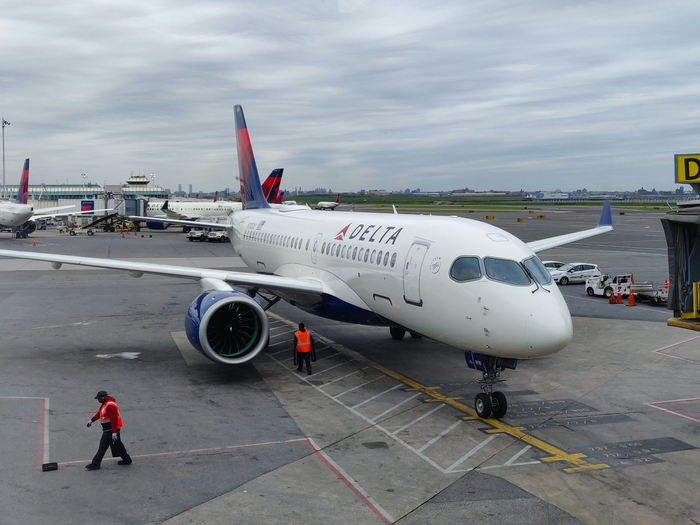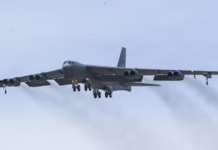Pratt & Whitney engine defects force 76 jets offline, disrupting carriers from Delta to SWISS. One airline will park its entire small-jet fleet for 18 months to salvage parts.
Seventy-six Airbus A220 aircraft sit idle worldwide as persistent engine problems force airlines to park jets for extended maintenance, new fleet data shows. The grounded planes represent nearly 17% of the global A220 fleet, according to industry database ch-aviation.
The crisis stems from corrosion damage in Pratt & Whitney GTF engines linked to a production defect. Airlines have struggled for years with the engine reliability issues, which have forced costly groundings and operational disruptions across multiple carriers.
Of the 451 A220s in service or awaiting completion, 76 remain inactive as of early November, ch-aviation reports. The figure excludes aircraft already retired from service.
SWISS Takes Drastic Step
Swiss International Air Lines plans to ground its entire nine-aircraft A220-100 fleet to cannibalize engines for its larger A220-300s. The move will keep the smaller jets parked for approximately 18 months.
“This isn’t a safety issue, but it’s a constant source of effort,” SWISS Chief Financial Officer Dennis Weber said. “The A220-100s will remain grounded. This will take around a year and a half.”
The airline currently has two A220-100s in storage, with the remaining seven expected to join them soon.
U.S. Carriers Among Those Affected
Delta Air Lines has five A220-100s undergoing maintenance, while the carrier also has two A220-300s in repair. JetBlue Airways has two A220-300s in maintenance and two more in storage.
Bulgaria Air and Croatia Airlines each have one A220-100 in maintenance. ITA Airways operates both variants and has multiple aircraft of each type either in storage or undergoing repairs.
Smaller Variant Hit Hard
The A220-100 fleet shows 60 active aircraft and 11 inactive units. Seven of the inactive jets are undergoing maintenance, while four sit in storage. Beyond Delta, SWISS and ITA Airways account for the storage figures.
The database designates the inactive aircraft as either undergoing maintenance or in storage, depending on their operational status.
Larger Model Faces Wider Impact
The A220-300 variant shows more extensive problems, with 313 active aircraft and 64 inactive units. Twenty-three of the grounded planes are undergoing maintenance or repairs, while 41 remain in storage.
Air Austral has been hit particularly hard. Only one of its three A220-300s remains active, and the French carrier plans to end A220 operations by 2026.
Air France has six A220-300s in maintenance and seven more in storage. airBaltic has three in maintenance and two in storage. Korean Air, QantasLink and other carriers also report aircraft unavailable for service.
Three inactive A220-300s currently lack assigned operators. The aircraft previously flew for Egyptair, with two bound for Breeze Airways. Seven additional aircraft have been delivered to lessors but have no confirmed operator, ch-aviation reports.
Private Jets Less Affected
Airbus Corporate Jets offers a business aviation version of the A220-100 called the ACJ TwoTwenty. Comlux Aviation Malta, the variant’s only listed operator, has two active aircraft and one in storage.
The first ACJ TwoTwenty emerged from the paint shop in November 2021 and completed its maiden flight roughly one month later. Production numbers remain limited compared to commercial variants.
Industry Faces Mounting Pressure
The grounding of nearly one-fifth of the global A220 fleet highlights the severity of the engine crisis. With Air Austral preparing to exit A220 operations and SWISS parking its A220-100s for at least 18 months, Airbus and Pratt & Whitney face pressure to resolve the problems quickly.
The A220 program, originally developed by Bombardier as the CSeries before Airbus acquired it, had shown promise for improved operational efficiency and passenger experience. The engine issues have overshadowed those advantages in recent years.
Airlines and industry stakeholders await a permanent fix to the Pratt & Whitney engine problems that continue to disrupt operations and force costly fleet adjustments.

Key Takeaways
- Seventy-six A220 aircraft, representing nearly 17% of the global fleet, remain grounded due to Pratt & Whitney engine corrosion issues stemming from production defects.
- SWISS will park its entire nine-aircraft A220-100 fleet for 18 months to cannibalize engines for larger A220-300s.
- U.S. carriers Delta and JetBlue have multiple aircraft in maintenance or storage, while Air Austral plans to exit A220 operations by 2026.
- The A220-300 variant faces more extensive problems, with 64 inactive units compared to 11 inactive A220-100s.








